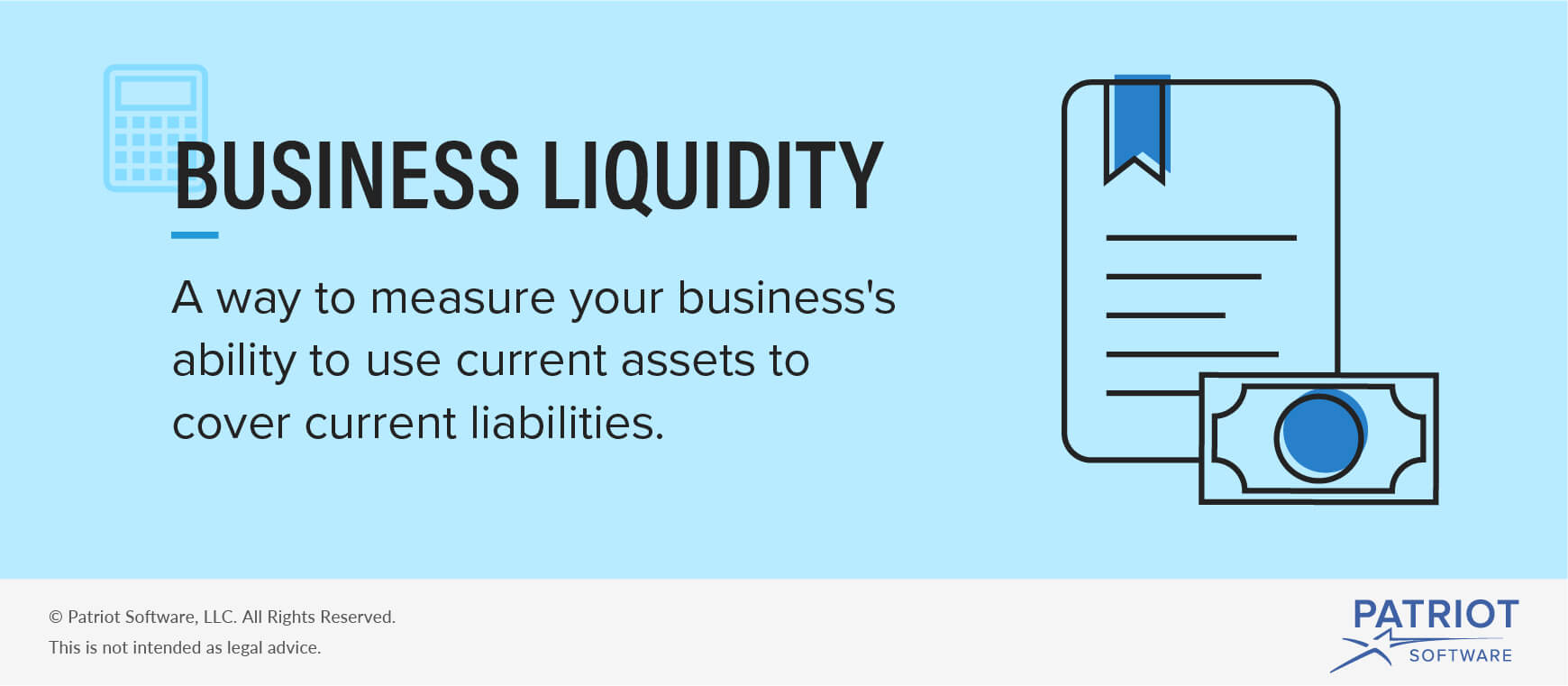Does your business have enough money to pay off debts? If you aren’t sure, then you need to learn about liquidity.
What is liquidity in accounting?
Liquidity is a way to measure your business’s ability to use current assets to cover current liabilities. If your business is liquid, you can quickly and easily convert assets into cash to use.
Current assets include cash, accounts receivable, inventory, etc. Current liabilities are debts that you owe within a year.
You can measure your business’s liquidity by using small business financial ratios.

Liquidity ratios
There are various business liquidity ratios. The most common liquidity ratios are the current ratio and the quick ratio.
Current ratio
The current ratio is also called the working capital ratio.
To do the current ratio, divide your total current assets by your total current liabilities.
Current Ratio = Total Current Assets / Total Current Liabilities
The current ratio is written as the assets compared to liabilities. Typically, a 2:1 ratio is considered an indicator of good liquidity.
Let’s say your business had $20,000 in current assets last month. It also had $10,000 in current assets.
Current Ratio = $20,000 / $10,000
Current ratio = 2:1
The current ratio assumes that your business can liquidate all assets to pay your business liabilities. But, it isn’t always easy to convert assets into cash. For example, it might take you a while to convert machinery into cash.
Quick ratio
The quick ratio is also called the acid-test ratio.
The quick ratio is similar to the current ratio, but you subtract your total current inventory from your total current assets.
Quick Ratio = (Total Current Assets – Total Current Inventory) / Total Current Liabilities
The quick ratio is written as a single number, often as a decimal. The higher the quick ratio, the better your liquidity. A healthy quick ratio is considered to be 1.0 or more.
Let’s use the same numbers as in the current ratio. But, let’s say you also have $15,000 in current inventory.
Quick Ratio = ($20,000 – $15,000) / $10,000
Quick Ratio = 0.5
While the current ratio shows healthy liquidity, the quick ratio shows that the business has poor liquidity.
Many people think the quick ratio is more accurate than the current ratio because it removes inventory, which is often difficult to convert into cash quickly. The quick ratio is especially useful for businesses that have a lot of inventory, such as retail, wholesale, and manufacturing businesses.
Why is liquidity important for a business?
You might think liquidity is just another accounting number you can calculate. But, knowing your liquidity is important if you want to get a loan or spot financial problems.
Loan officers may want to look at your liquidity ratios. A healthy liquidity shows creditors that you are likely to pay them back because you have the assets to do so.
Measuring your liquidity can also help you see financial problems before they get too big. Calculate monthly and annual ratios and compare them over time. By doing these comparisons, you can see when your ratios start declining.
Can you have too much liquidity?
It’s good for your business to be liquid. But can your business be too liquid?
It depends on your thinking. Accountants and business experts have mixed opinions about whether or not a business can be too liquid.
Some people think that the more assets your business has, the better. More assets means your business is doing well and can handle unexpected circumstances.
Other people think a business can be too liquid if there are excess, unused assets. These assets can be used to improve your business, but instead, they are unutilized.
Do you need a way to record your transactions? Try Patriot’s small business accounting software to track your finances. Start your free trial today!
